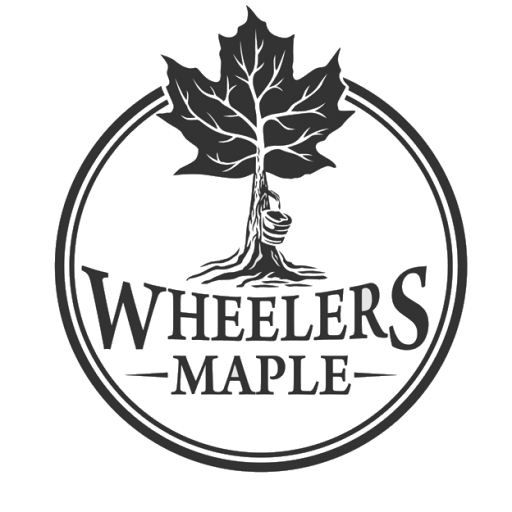How Wheelers Make Maple Syrup
The earliest confirmed record of maple syrup production at our sugar bush dates back to 1868. Over the years many things have changed but many have stayed the same. Every Spring, during March and April, the Canadian winter weather starts to warm up to above freezing during the day and the sugar maple trees come to life and impart their sweet sap. We simply have to drill a small hole into the tree, collect the watery maple sap, and boil it to concentrate the natural sugars to make Pure Maple Syrup. Visitors can explore part of our sugar bush in action on one of our many Hiking Trails.
Our production grows with our family and Wheelers Sugar Bush is now one of the largest producers in Ontario with over 40,000 trees tapped. Over 600 kilometres of pipeline is used to transport maple sap to the Sugar Camp where it is boiled into pure maple syrup. The latest in equipment and technology is used to produce maple products that meet the high quality standards that Vernon expects of every litre of maple syrup that carries the Wheelers label.
Tapping
Pipeline Network
Pump Houses
Converting Sap to Syrup
Reverse Osmosis
A reverse osmosis machine is used to remove about 50% of the water from the sap. Selectively permeable membranes separate pure water from the raw sap, resulting in a sweeter sap that is then boiled in the evaporators.
An added benefit of using this technology is the production of large amounts of pure water. We use this pure water to clean our evaporators and the reverse osmosis machine. We even use this water to flush the toilets in the bathrooms during maple syrup season!
Evaporators
We have two seperate boiling systems at Wheelers – a wood pellet fired evaporator with oil finishing pans and a steam powered evaporator.
Both systems were designed by Vernon and Mark, and manufactured by CDL which is a maple supply company from Quebec.
